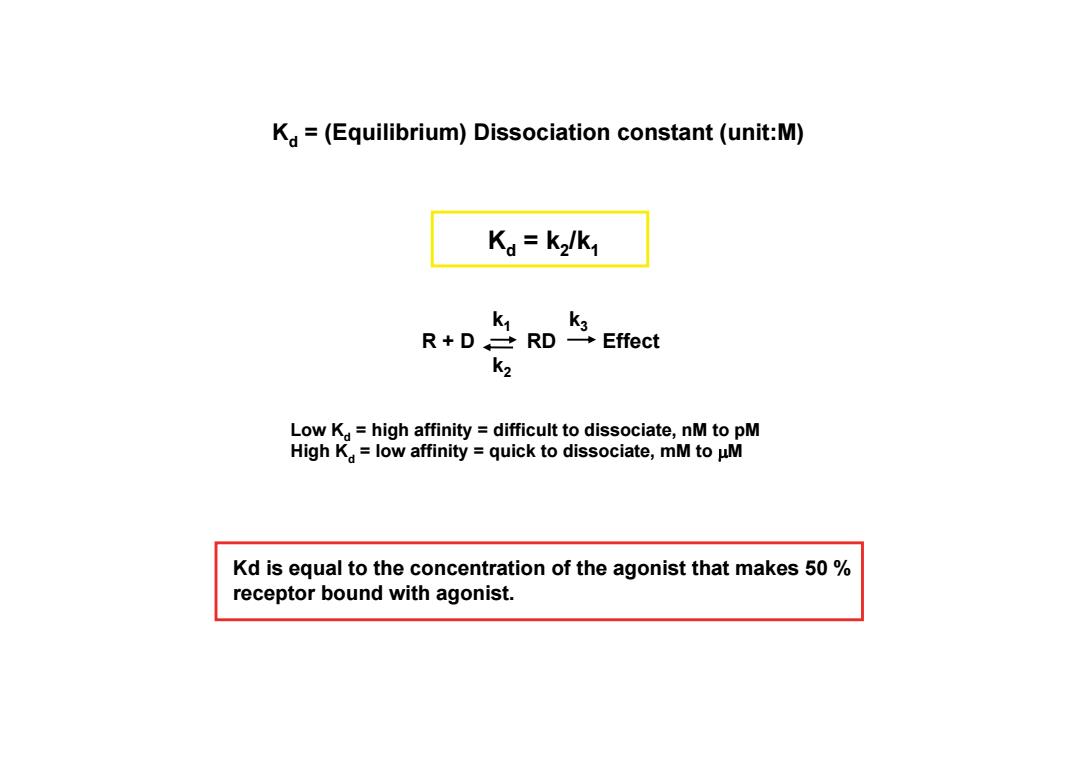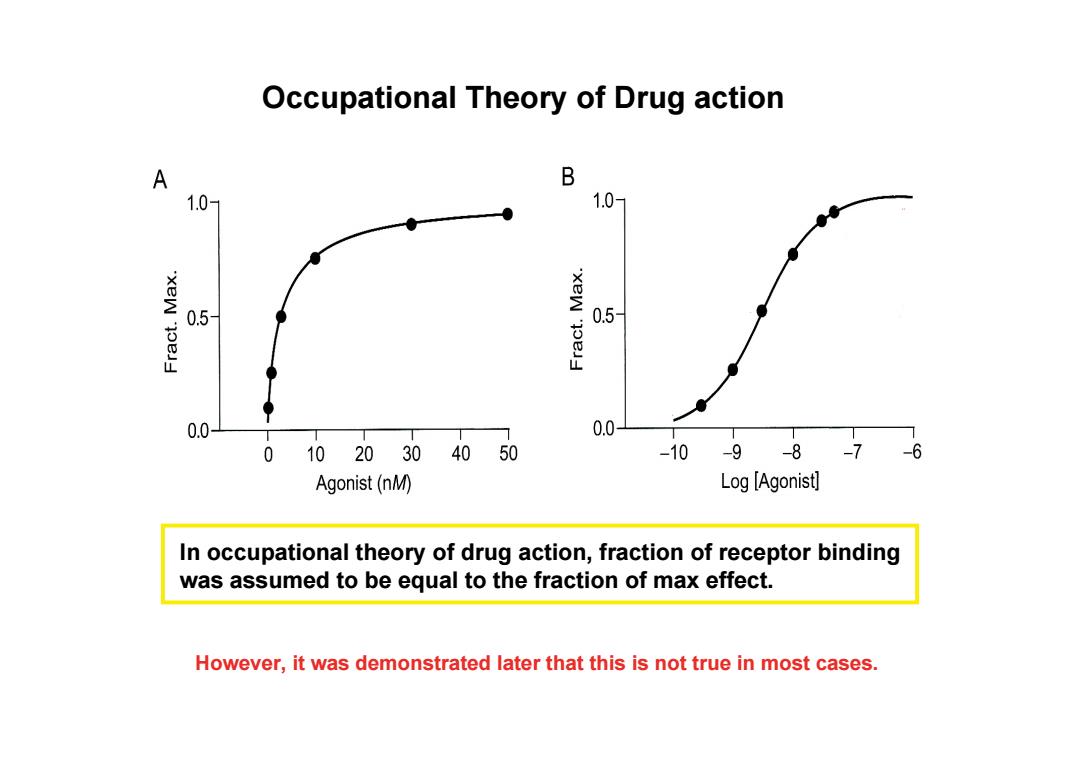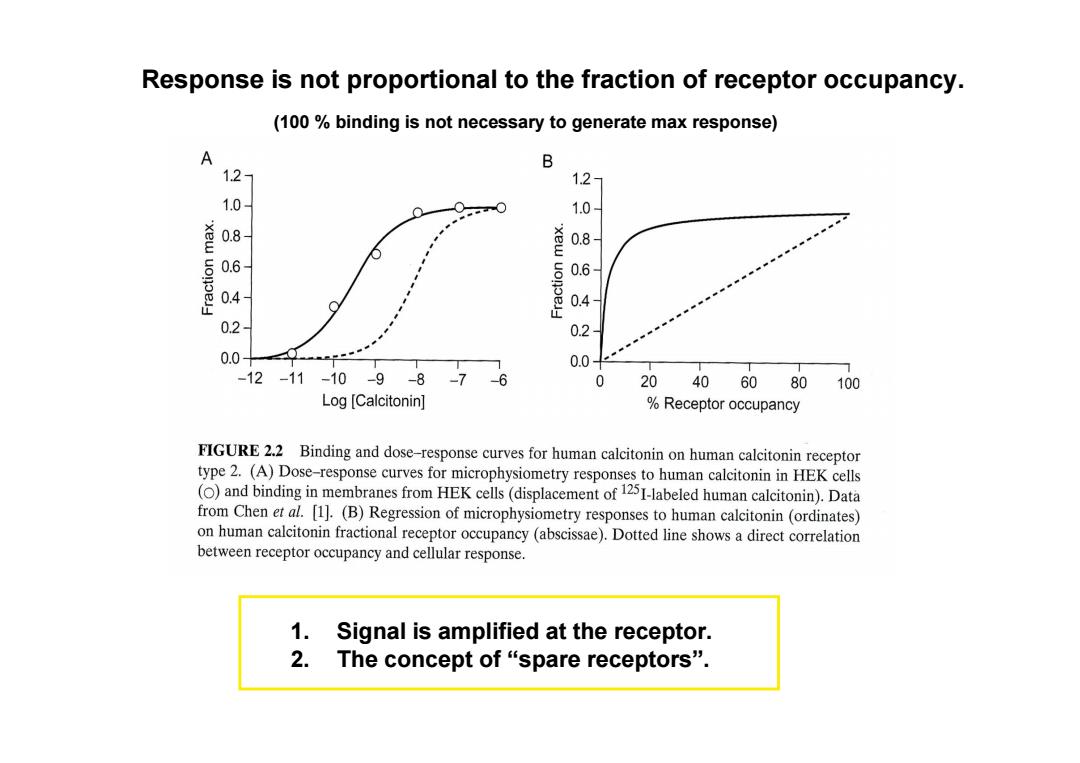
K =(Equilibrium)Dissociation constant(unit:M) Kd=k2/k1 K1 K3 R+D士RD→Effect K2 Low K=high affinity difficult to dissociate,nM to pM High K=low affinity quick to dissociate,mM to uM Kd is equal to the concentration of the agonist that makes 50% receptor bound with agonist
Kd = (Equilibrium) Dissociation constant (unit:M) Low Kd = high affinity = difficult to dissociate, nM to pM High Kd = low affinity = quick to dissociate, mM to M R + D RD Effect k1 k2 k3 Kd = k2/k1 Kd is equal to the concentration of the agonist that makes 50 % receptor bound with agonist

Occupational Theory of Drug action A B 1.0- 1.0- xeW 0.5- 0.5- 0.0- 0.0- 0 102030 40 50 -10 -9 -8-7 -6 Agonist(nM) Log [Agonist] In occupational theory of drug action,fraction of receptor binding was assumed to be equal to the fraction of max effect. However,it was demonstrated later that this is not true in most cases
Occupational Theory of Drug action In occupational theory of drug action, fraction of receptor binding was assumed to be equal to the fraction of max effect. However, it was demonstrated later that this is not true in most cases

Response is not proportional to the fraction of receptor occupancy. (100%binding is not necessary to generate max response) A B 1.2- 1.2- 1.0- 1.0- 0.8- xew 0.8- 06 0.6- 0.4- 0.4 0.2- 0.2 0.0+ 0.0 -12-11-10-9 -8 -7 -6 20 40 60 80 100 Log [Calcitonin] Receptor occupancy FIGURE 2.2 Binding and dose-response curves for human calcitonin on human calcitonin receptor type 2.(A)Dose-response curves for microphysiometry responses to human calcitonin in HEK cells ()and binding in membranes from HEK cells(displacement of 125I-labeled human calcitonin).Data from Chen et al.[1].(B)Regression of microphysiometry responses to human calcitonin (ordinates) on human calcitonin fractional receptor occupancy (abscissae).Dotted line shows a direct correlation between receptor occupancy and cellular response. 1.Signal is amplified at the receptor. 2. The concept of“spare receptors
Response is not proportional to the fraction of receptor occupancy. 1. Signal is amplified at the receptor. 2. The concept of “spare receptors”. (100 % binding is not necessary to generate max response)